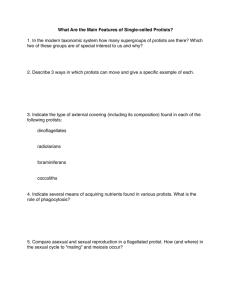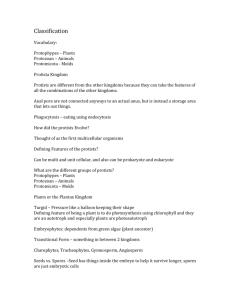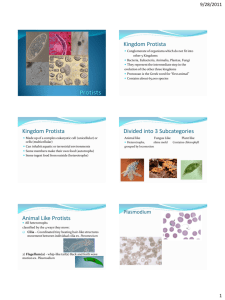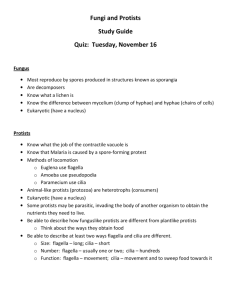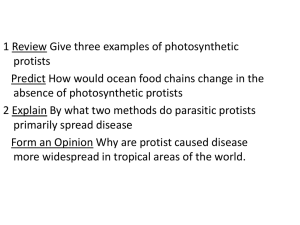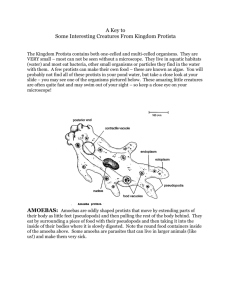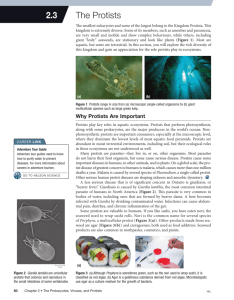doc
advertisement
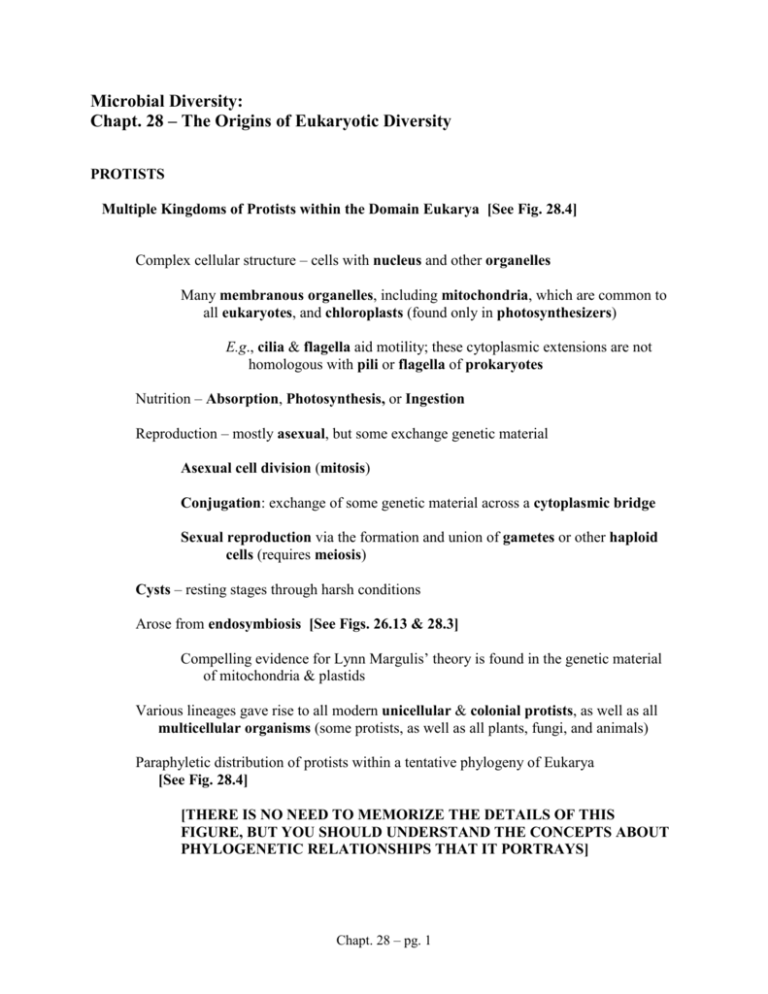
Microbial Diversity: Chapt. 28 – The Origins of Eukaryotic Diversity PROTISTS Multiple Kingdoms of Protists within the Domain Eukarya [See Fig. 28.4] Complex cellular structure – cells with nucleus and other organelles Many membranous organelles, including mitochondria, which are common to all eukaryotes, and chloroplasts (found only in photosynthesizers) E.g., cilia & flagella aid motility; these cytoplasmic extensions are not homologous with pili or flagella of prokaryotes Nutrition – Absorption, Photosynthesis, or Ingestion Reproduction – mostly asexual, but some exchange genetic material Asexual cell division (mitosis) Conjugation: exchange of some genetic material across a cytoplasmic bridge Sexual reproduction via the formation and union of gametes or other haploid cells (requires meiosis) Cysts – resting stages through harsh conditions Arose from endosymbiosis [See Figs. 26.13 & 28.3] Compelling evidence for Lynn Margulis’ theory is found in the genetic material of mitochondria & plastids Various lineages gave rise to all modern unicellular & colonial protists, as well as all multicellular organisms (some protists, as well as all plants, fungi, and animals) Paraphyletic distribution of protists within a tentative phylogeny of Eukarya [See Fig. 28.4] [THERE IS NO NEED TO MEMORIZE THE DETAILS OF THIS FIGURE, BUT YOU SHOULD UNDERSTAND THE CONCEPTS ABOUT PHYLOGENETIC RELATIONSHIPS THAT IT PORTRAYS] Chapt. 28 – pg. 1 Hypotheses for the earliest stages of biological diversification: “Last Universal Common Ancestor” Common ancestral community of primitive cells Highly diverse genetically and phenotypically “Fungus-like” protists Heterotrophic – generally via absorption Some are decomposers E.g., slime molds Some are parasitic E.g., water molds “Plant-like” protists Autotrophic – generally via photosynthesis Some are unicelluar E.g., Euglena Phytoplankton (unicellular algae & cyanobacteria [prokaryotes] account for ~ 70% of all photosynthesis) Some are multicelluar E.g., Many seaweeds “Animal-like” protists Heterotrophic – generally via ingestion Some are free-living E.g., Some amoebae Some are parasitic symbionts E.g., Giardia Some are mutualistic symbionts E.g., protists of termite guts Exhibit slightly more complex behavior than prokaryotes E.g., Predator-prey interaction between ciliates: Didinium preys upon Paramecium Chapt. 28 – pg. 2



